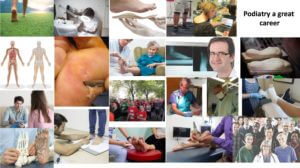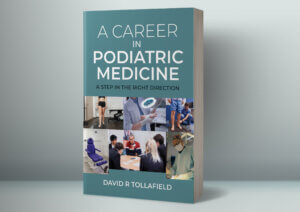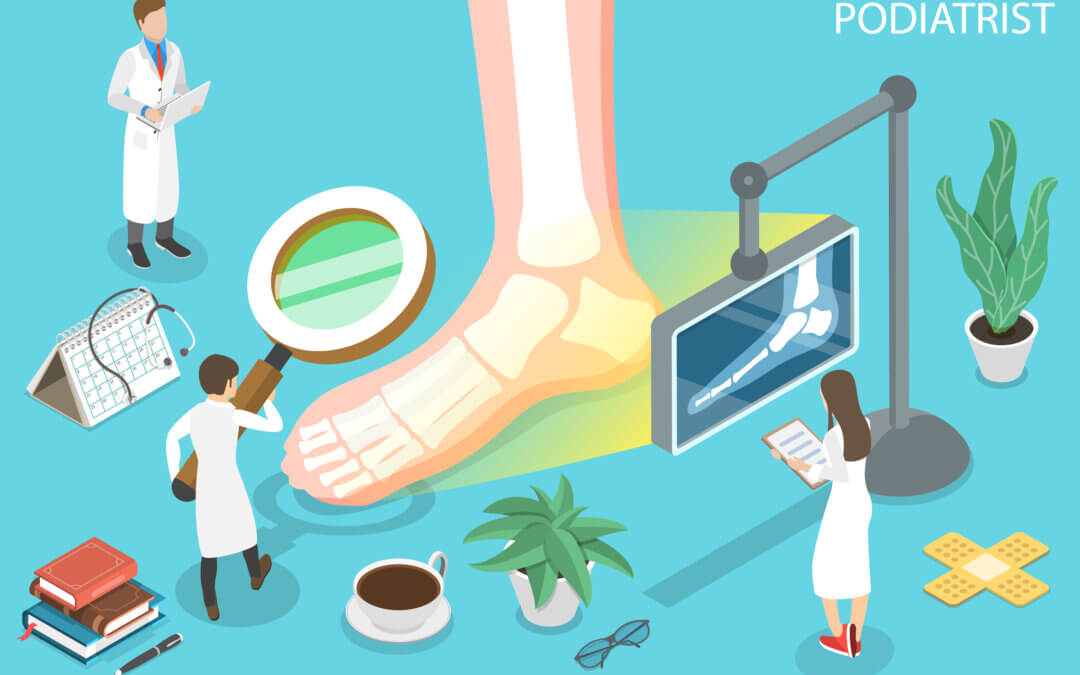Podiatry covers the diagnosis and management of foot pain
Podiatry provides an element of aesthetic delivery in feet, but this always takes the medical perspective into consideration. Foot Health Practitioners (FHP) overlap with some of this activity but are not podiatrists. Correspondence and block courses are run by the SMAE Institute, which has been training people in foot care since the start of the 20th century. FHPs are trained to know when to pass certain patient groups on to qualified podiatrists.
Judith entered the university course as a mature professional, and can now expand her range of activities that before were out of her reach. FHPs deal with low-risk patients and provide an excellent service in keeping their feet comfortable. Judith wanted to use modern diagnostic techniques, treat a local football team, use local anaesthetics and apply musculoskeletal studies at a level that could help her patients.
“I was so frustrated as an FHP because there were so many things I didn’t know, and I wanted to know, and so many times I’d have to refer people on to somebody else, to a podiatrist, and I thought, “Oh, I wish I could do that.” We can only deal with low risk, just maybe prevention, so it doesn’t go into immediate risk. When people come in and say, “I’ve got a sore ankle, I want to know what that is. I want to be able to help. I want to be able to fix you.” If I see somebody with maybe cellulitis, I panic. I go, “Please go and see your GP.” I always felt I don’t know enough. So there’s definitely a difference between FHPs and podiatrists. They’re absolutely not the same. Podiatrists are more than nail cutters and hard skin removers because that’s what I am (as a former FHP). I’m a nail cutter. I’m a hard-skin remover.” Judith Watson, former student & registered nurse, University of Ulster.
Many students seeking podiatry were often given the impression that the profession was about cutting toenails and trimming corns, only to discover that entering a three or four-year degree reading podiatric medicine was very different.
The NHS does not provide ‘pedicure’ emphasising high-risk cases, a point repeated in this book. All podiatrists learn how to reduce calluses and enucleate corns for one purpose. We can extend this principle to the nails as well. An intense degree of skill and hours are required to use a scalpel. The purpose is to decipher the underlying tissue from healthy to necrotic, from inflamed to malignant. Superficial debridement is shown using a scalpel to identify the underlying skin condition. This is partly diagnostic but does offer the patient relief. This skill requires plenty of clinical exposure as everyone’s skin (tissue) is different

A Common Feature in Feet
Common conditions comprise a proportion of the generalist’s caseload. The musculoskeletal (MSK) element deals with connective tissue damage, strains and deeper changes in the foot and joints.
When it comes to skin – callus and corns occur in different degrees and can form extremely painful conditions, from splitting skin (fissures) to deeper ulcers, foreign indwelling damage and cysts. The nail bed harbours many problems and requires skill to navigate fleshy tumours and overgrown blood vessels, causing deformity and distortion known as hypergranulation.
Because the foot contacts the ground, it is exposed to injury. Friction blisters alert us to pain, but many problems remain locked away from the eye unless pain breaks through. The podiatrist must understand dermatology – medicine associated with the skin and pathology, to be able to debride with skill and create no harm.
While many adverts talk about the conditions of corns, callus and nails, they seldom point out why podiatrists must become highly skilled. Qualified Doctors of Medicine in dermatology often defer to podiatrists, including the common infection called the foot wart (Greek – verruca pedis) caused by the human papillomavirus.

In addition, we treat dermatophytic infections (fungal or mycotic forms) that affect skin and nails. Microbiology is taught within pathology in years 1 and 2. Infections around the nail are increasingly treated by podiatrists who have successfully led the healthcare field.
Treatment for corn and callus requires knowledge of locally applied medication, diagnostic imaging such as ultrasound, sample biopsy to rule out malignancy, cultures for infections, and detailed medical history to rule out other skin diseases, and underlying medical conditions. The use of caustics and keratolytic may be used, or cryotherapy, electrical desiccation, microwave and laser to produce controlled destruction of abnormal blood vessel changes in the skin. Surgical excision and plastic skin flap surgery have their place but are outside the undergraduate training programme.
If there is a soft side of podiatry, the harder side is based on biomechanics – physical forces applied to the human body. Many podiatrists find this work area attractive, not least because it is full of new exciting gizmos, and various measuring systems.

Podiatry is a great career and is often not visible during career advice when seeking healthcare options. Read more about professionals
Busypencilcase Communications. Est. 2015

Thanks for reading ‘The softer side of podiatry’ by David R Tollafield, which appears for ConsultingFootPain from an extract from A Career in Podiatric Medicine – A Step in the Right Direction.

This book will be available in early 2023 from AMAZON books (only in paperback). Sign up to receive advance notice of the launch

Recent Comments